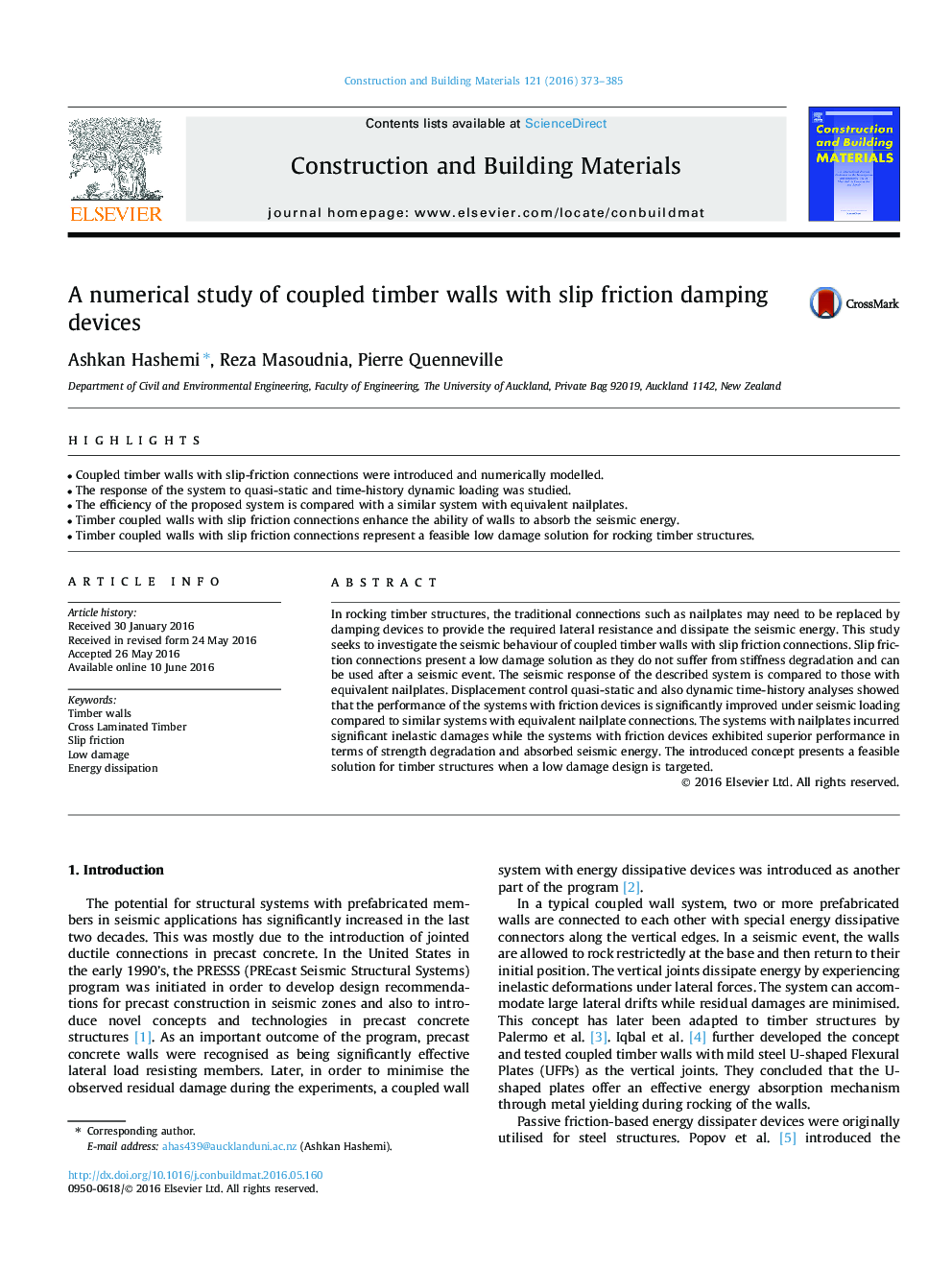| Article ID | Journal | Published Year | Pages | File Type |
|---|---|---|---|---|
| 6718482 | Construction and Building Materials | 2016 | 13 Pages |
Abstract
In rocking timber structures, the traditional connections such as nailplates may need to be replaced by damping devices to provide the required lateral resistance and dissipate the seismic energy. This study seeks to investigate the seismic behaviour of coupled timber walls with slip friction connections. Slip friction connections present a low damage solution as they do not suffer from stiffness degradation and can be used after a seismic event. The seismic response of the described system is compared to those with equivalent nailplates. Displacement control quasi-static and also dynamic time-history analyses showed that the performance of the systems with friction devices is significantly improved under seismic loading compared to similar systems with equivalent nailplate connections. The systems with nailplates incurred significant inelastic damages while the systems with friction devices exhibited superior performance in terms of strength degradation and absorbed seismic energy. The introduced concept presents a feasible solution for timber structures when a low damage design is targeted.
Related Topics
Physical Sciences and Engineering
Engineering
Civil and Structural Engineering
Authors
Ashkan Hashemi, Reza Masoudnia, Pierre Quenneville,
